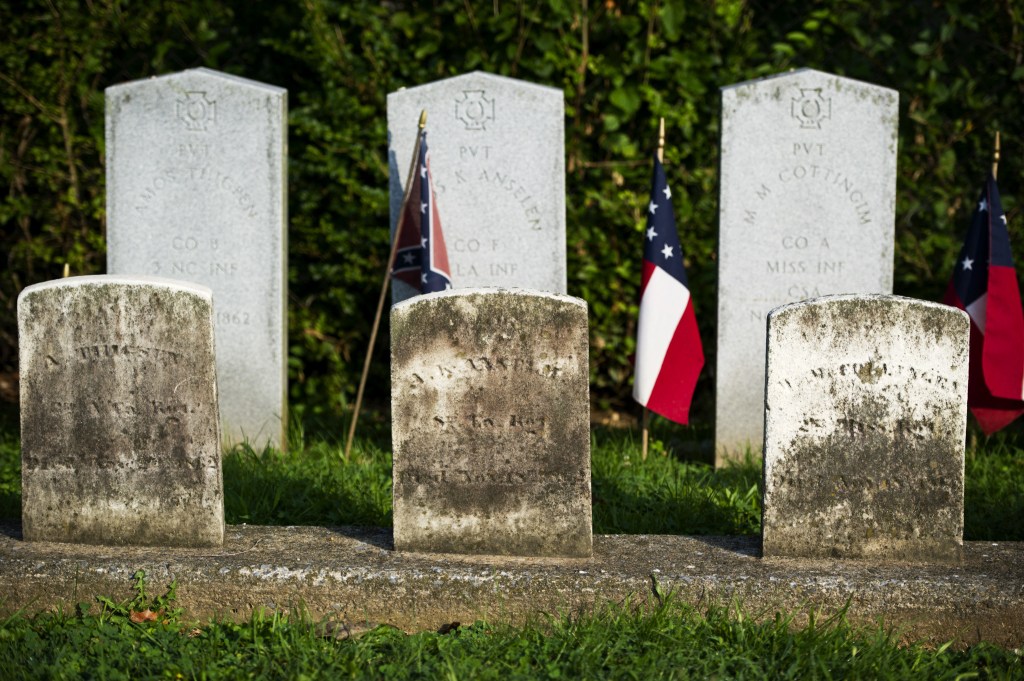News
I was a Civil War buff, but my version was whitewashed

In 1960, I grew to become consumed with the Civil Battle as America approached the one hundredth Anniversary of its starting. I used to be 8 years outdated, dwelling on Lengthy Island, and had already learn Bruce Catton’s “A Stillness at Appomattox,” written in 1952. I might go on to learn eight extra of his books through the years, most of them greater than as soon as.
In these early years, the Civil Battle was attention-grabbing and thrilling to me as a younger white boy, largely due to the brilliance of Bruce Catton whose in depth analysis made the battle come to life. His descriptions of the individuals and the occasions had been so actual to me. I might really feel the anguish of wounded Union troopers, touring the torturous 17 miles from the Wilderness to Fredericksburg in rickety picket ambulances.
I continued to learn Catton and others after shifting to Maryland for faculty in 1970, and over the following years, I traveled to lots of the Civil Battle battlefields in Maryland, Virginia, Pennsylvania, Tennessee and Georgia. I realized an awesome deal concerning the Civil Battle — what occurred, the place it occurred and what number of casualties there have been. I realized who gained and who misplaced every of the engagements.
However what I by no means actually thought-about was why: Why was the battle fought in any respect? Why did 622,000 Union and Accomplice troopers need to die? Why did a number of hundred thousand extra need to endure from crippling battle wounds for the remainder of their lives?
Because the nation continues to grapple with deep divisions primarily based on race and sophistication, and pundits discover whether or not we’re headed towards a second Civil Battle, of the sort proven in Alex Garland’s new dystopian film, I’ve been enthusiastic about these questions and clarifying my understanding of the Civil Battle in at present’s context.
I put myself within the place of these households who grieved the lack of fathers, brothers and sons — North and South. And thought, for what? Low cost labor? Why are we not outraged even at present over the ignominy of the Accomplice trigger?
Merely put, the battle was fought to maintain enslaved Black individuals in bondage in order that white Southern planters might revenue from their labor. These in energy within the South had been keen to sacrifice a era of their very own younger males to be able to keep slavery. They noticed their lifestyle as being threatened, they usually noticed their energy waning within the halls of Congress. That led them to secession and battle.
Slavery was threatened in the US as a result of sufficient individuals within the North and West acknowledged that enslaving human beings for revenue was mistaken. The Abolitionist motion had formally begun in 1830, however a gradual awakening amongst white individuals had began a few years earlier. Way back to the Colonial interval, anti-slavery societies shaped by Quakers sought to abolish the heinous observe.
What was promoted and marketed to youngsters like me within the early Sixties was a whitewashed model of the darkish, ugly actuality that was the American Civil Battle. The battle wasn’t about two opposing forces that each fought for a noble trigger — just one facet fought for a noble trigger. Regardless of all of the lies of the final 160 years on the contrary, one facet fought to enslave human beings.
A concerted program of disinformation started shortly after Lee’s give up at Appomattox Court docket Home. Southern historians wrote that the battle was merely a heroic protection of the Southern lifestyle in opposition to the overwhelming forces of the North. Enslaved individuals had been principally completely satisfied, and the battle was not about slavery. However paperwork just like the Accomplice Structure and the Declaration of Secession in a number of southern states instructed a special story. In these paperwork, the Accomplice leaders made it abundantly clear that they fought to keep up slavery.
All their lies had been additional compounded by the emergence of a really highly effective group of girls — the United Daughters of the Confederacy (UDC) — in 1894. They had been largely answerable for the proliferation of statues all through the South, and even some within the North, that honored the “heroes” of the Confederacy. Many of those statues had been constructed in the course of the Jim Crow period to strengthen white supremacy. The UDC additionally sought to show the following era these lies that whitewashed the horror of slavery and the explanations for the battle by regulating the content material of college textbooks within the south.
Additionally, streets, faculties, parks, even U.S. navy bases had been named after Accomplice generals as a method of normalizing their traitorous deeds. How might this be? They had been all traitors — sure, even Robert E. Lee. Lately, many of those statues have been taken down as sanity and cause slowly win. However then there are nonetheless locations like Shenandoah County, Virginia, the place the college board this month voted to reinstate Accomplice names that had been faraway from faculties.
What I’ve by no means understood was why there was no voice of cause within the South demanding to know why their ancestors allowed these rich planters and politicians to ship their sons off to combat. 1000’s gave up their very own youngsters so the wealthy might keep the wealth they constructed on the backs of enslaved individuals, together with the white supremacist energy construction. That’s what the Civil Battle was actually about.
Stephen Milmoe ([email protected]) is a retired trainer.
